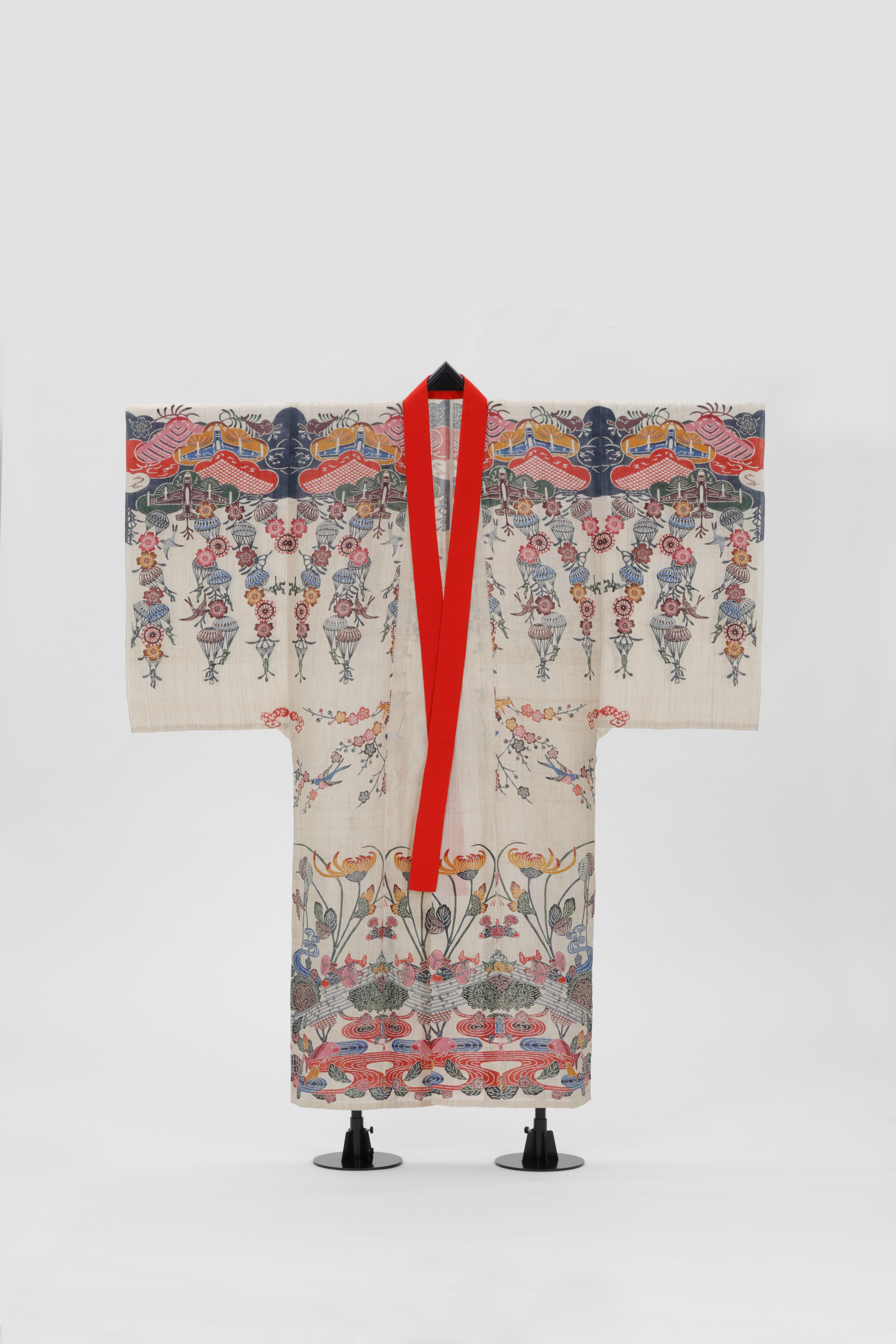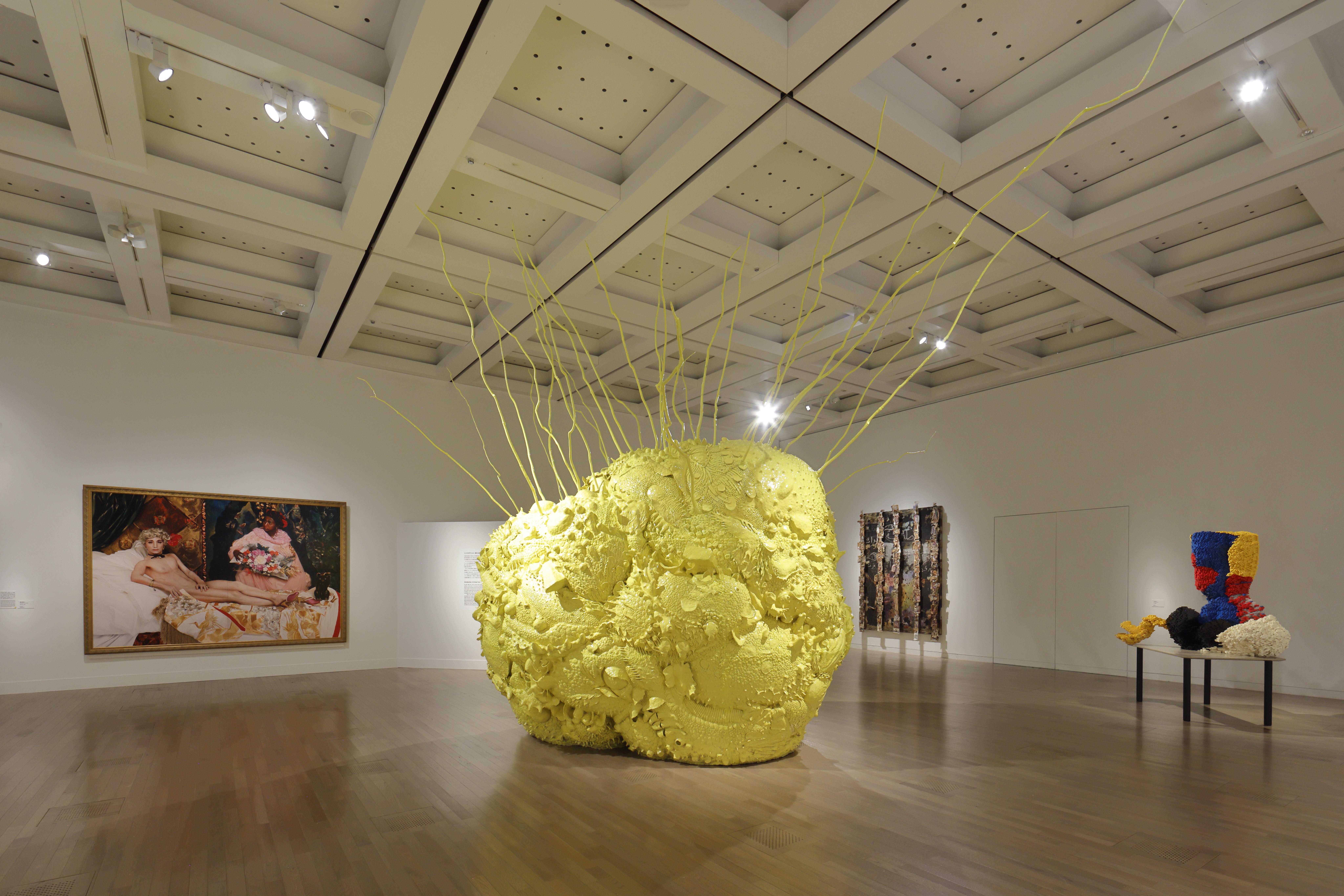Prism of the Real: Making Art in Japan 1989-2010
September 3 (Wed), 2025 - December 8 (Mon), 2025
- Now on View
- Special Exhibitions
Prism of the Real examines the practices of more than 50 artists from Japan and abroad. It explores both the art that emerged in Japan and how Japanese culture inspired the world between 1989, when the Shōwa era (1926–1989) ended and the Heisei era (1989–2019) began, and 2010.
These two decades saw the end of the Cold War and the advent of contemporary globalization, enabling the freer movement of people, goods, and information, and greatly encouraging international dialogue and engagement. Throughout this period, artists in Japan and elsewhere pursued new approaches, acting as prisms that refracted the social and cultural currents of the time into works that pose diverse questions. Co-curated by The National Art Center, Tokyo and M+, Hong Kong, this exhibition reflects on this critical transitional period through the lens of art. It presents a multifaceted view in which multiple histories and contexts coexist, while looking at Japan as a platform for artistic creation from both national and international perspectives.
The exhibition begins with a prologue that explores the early stirrings of internationalization in the 1980s. It is followed by a critical turn, beginning in 1989, marked by a surge of artistic activity during a period of dynamic socio-political transformation in Japan. The examination of this era is conducted from three thematic perspectives. The first, The Past Is a Phantom, explores how artists continued to engage with the subject of war and its impact on the social, cultural, and individual psyches. The second, Self and Others, focuses on artistic practices that interrogate issues of identity, gender, and traditional hierarchy, showing how Japanese culture can facilitate interpersonal exchanges. The third, A Promise of Community, features projects that explore fresh possibilities of relation through interactions with existing communities or the creation of new ones.
Overview
- Period
-
September 3 (Wed), 2025 – December 8 (Mon), 2025
Closed on Tuesdays
*Closed on September 24 (Open on September 23) - Opening Hours
10:00-18:00 (Fridays and Saturdays, 10:00-20:00)
*Last admission 30 minutes before closing- Venue
-
The National Art Center, Tokyo
Special Exhibition Gallery 1E
7-22-2 Roppongi, Minato-ku, Tokyo 106-8558 - Admission (tax included)
-
General 2,000 yen (Adults), 1,000 yen (College students), 500yen (High school students) Tickets are available at
・Same-day tickets: The exhibition ticket booth at the National Art Center, Tokyo.
・ONLINE TICKET "e-tix"- This exhibition includes artworks that contain sexual expressions.
- Visitors who are junior high school students or younger will be admitted for free.
- Disabled persons (along with the one assistant) will be admitted for free upon presenting the Disabled Person’s Booklet or an equivalent form of government-issued ID.
- Reduction (100 yen off) applies to visitors who present the ticket stub of a current exhibition at The National Art Center, Tokyo; Suntory Museum of Art; or Mori Art Museum (Art Triangle Roppongi). Please show the ticket stub at the "Prism of the Real: Making Art in Japan 1989-2010" exhibition ticket booth.
- Students, faculty and staff, of “Campus Members”, can view this exhibition for 800 yen (students) and 1,800 yen (faculty/staff). Please purchase tickets at the "Prism of the Real: Making Art in Japan 1989-2010" exhibition ticket booth.
-
Credit card (Master Card, VISA, JCB, AMEX, Diners Club, DISCOVER, 銀聯, QUICPay), e-cash (Suica, PASMO, ICOCA, etc.), iD, Union Pay are available for purchasing tickets.
- Inquiries
(+81) 47-316-2772 (Hello Dial)
Featured Artists
AIDA Makoto, Matthew BARNEY, CAI Guo-Qiang, Christo, François CURLET, Dumb Type, FUKUDA Miran, Dominique GONZALEZ-FOERSTER, David HAMMONS, Pierre HUYGHE, ISHIUCHI Miyako, Joan JONAS, KASAHARA Emiko, KAWAMATA Tadashi, KAZAMA Sachiko, KOIZUMI Meiro, LEE Bul, Sharon LOCKHART, MIYAJIMA Tatsuo, MORI Mariko, MORIMURA Yasumasa, MURAKAMI Takashi, NAGASHIMA Yurie, NAKAHARA Kodai, NAKAMURA Masato, NARA Yoshitomo, NISHIYAMA Minako, OHTAKE Shinro, Oscar OIWA, OZAWA Tsuyoshi, Philippe PARRENO, Navin RAWANCHAIKUL, SHIGA Lieko, SHIMABUKU, SHITAMICHI Motoyuki, SONE Yutaka, Simon STARLING, Hito STEYERL, Thomas STRUTH, TABAIMO, TAKAMINE Tadasu, Fiona TAN, TERUYA Yuken, Rirkrit TIRAVANIJA, TSUBAKI Noboru, Franz WEST, Xijing Men, YAMASHIRO Chikako, YANAGI Miwa, YANAGI Yukinori, YANOBE Kenji, YONEDA Tomoko, etc. and archival materials.
*Alphabetical by last name

Nara Yoshitomo
Agent Orange
2006
Acrylic on canvas
162.5 × 162.5 cm
Private collection
© NARA Yoshitomo, 2025
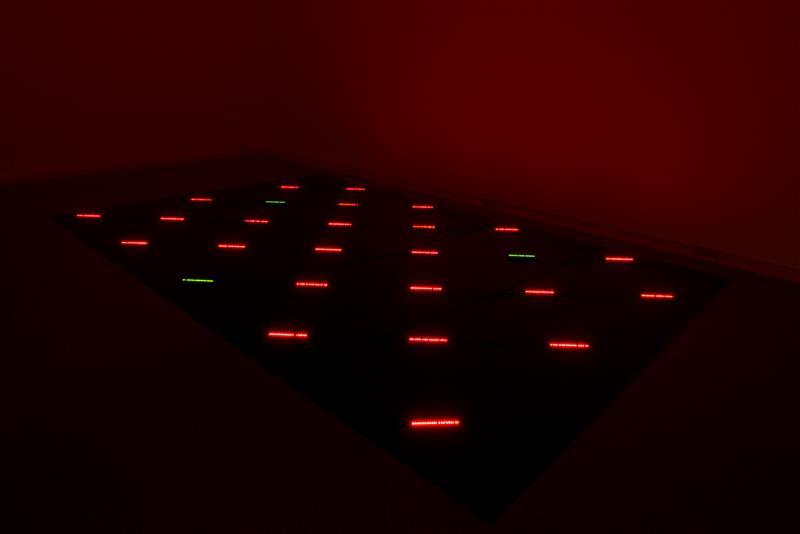
Miyajima Tatsuo
Slash
1990
LED
653 × 438 cm
The National Museum of Modern Art, Kyoto
Courtesy of The National Museum of Modern Art, Kyoto
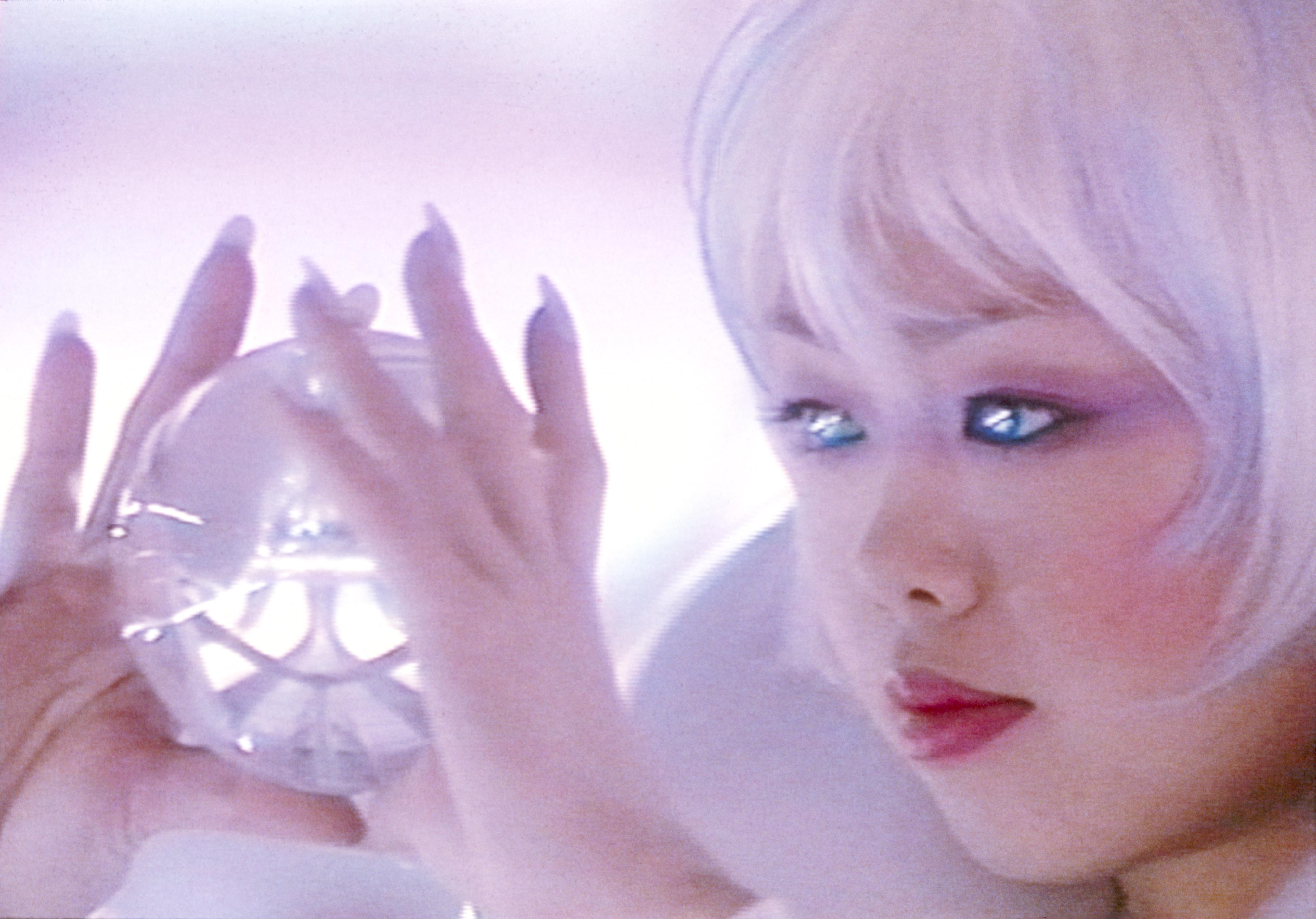
Mori Mariko
Miko no Inori
1996
Video
4 min. 42 sec.
Collection of the artist
© Mariko Mori. Courtesy of the Artist.
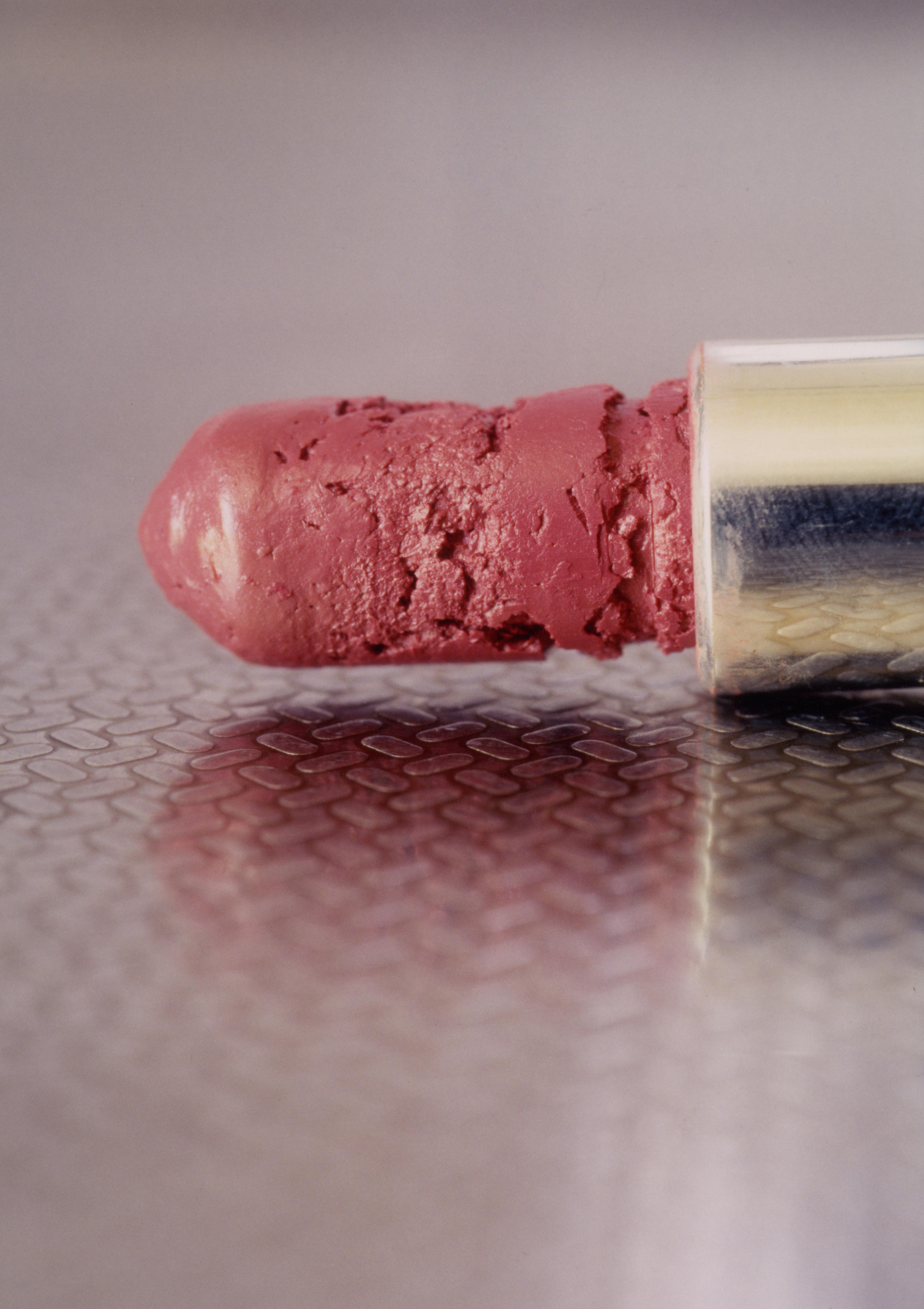
Ishiuchi Miyako
mother's #35
2002
C-print
107.5 × 74 cm
Collection of the artist
© Ishiuchi Miyako.
Courtesy of The Third Gallery Aya.
Highlights
Sources of Expression: Intersections of Art and the World
The exhibition focuses on a two-decade period of rapid globalization that changed social structures and inspired new forms of expression. Focusing on Japan, which was relatively quick to establish political and economic stability amid these evolutions, the exhibition examines artistic practices that emerged from freer movement of people, goods, and information. These were accompanied by a wave of museum openings, the rise of alternative spaces, and the flourishing of artist-in-residence programs and art festivals.
Art Opened to Social Change: How Artists Responded
At the dawn of the Heisei era (1989–2019), Japan, like the rest of the post-Cold War world, was undergoing dramatic transformation. This exhibition highlights experimental modes of expression that emerged and invigorated the Japanese art scene. It showcases the practices of more than 50 artists and collectives from Japan and abroad, including works that address the postwar era from a Japanese vantage point, question identity through relationships with others, and explore new ways of forming connections within communities.
Multiple Perspectives on the Era: Viewing Through Curatorial Lenses
Prism of the Real has three thematic sections, or ‘curatorial lenses’, following a prologue and an introduction. The exhibition explores themes such as confronting and reinterpreting memories of war, reexamining gender and hierarchy in Japanese culture, and exploring the value of community and the possibilities of human connections. The exhibition offers not a single, linear narrative, but a multifaceted view of art in which multiple perspectives intersect. It presents a multinational critical framework, showing that art made in Japan in the 1990s and 2000s continues a longstanding tradition of exchange, and that Japan has always been a diverse and open platform for artistic exploration.
Prologue
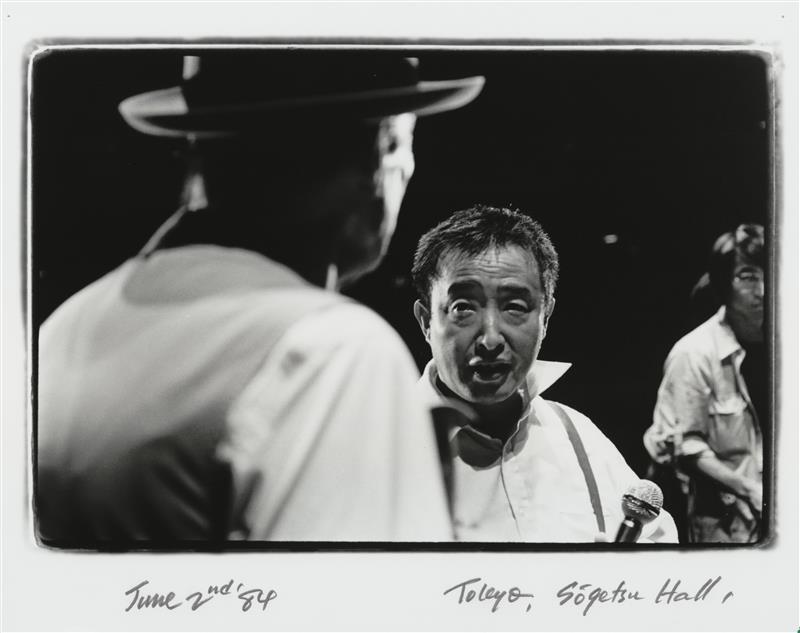
The exhibition starts with an overview of the internationalization of Japan during the 1980s which was facilitated by established economic stability, focusing on artists’ activities and the systems that supported them.
Nam June Paik and Joseph Beuys, Performance for 2 Pianos|Photo: Anzaï Shigeo
Sogetsu Hall, June 2, 1984. [June 2, 1984]
Gelatin Silver Print
24.0 × 29.6 cm
ANZAÏ Photo Archive, The National Art Center, Tokyo
© Estate of Shigeo Anzaï, 1984. Courtesy of ANZAÏ Photo Archive, The National Art Center, Tokyo.
Introduction: A Critical Turn
1989 marked a turning point, with the emergence of innovative and dynamic forms of expression and new critical perspectives. Artists employed everyday materials and drew on popular culture, to incorporate and reflect their own lived realities as well as social conditions in works with powerful visual impact.

Morimura Yasumasa
Portrait (Futago)
1989
C-print, transparent medium 210 x 300 cm
Collection of Mori Art Museum, Tokyo
© MORIMURA Yasumasa. Installation view photo: Muto Shigeo
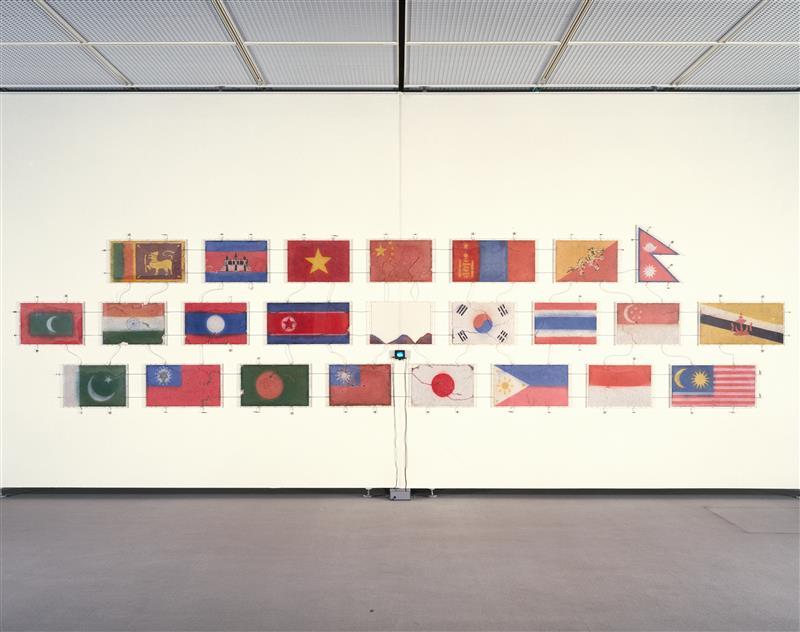
Yanagi Yukinori The World Flag Ant Farm 1991 - Asia
1991
Colored sand, plastic boxes, plastic tubes, video, monitor
176.5 × 741.5 cm
Hiroshima City Museum of Contemporary Art
© YANAGI STUDIO.
Courtesy of Hiroshima City Museum of Contemporary Art.
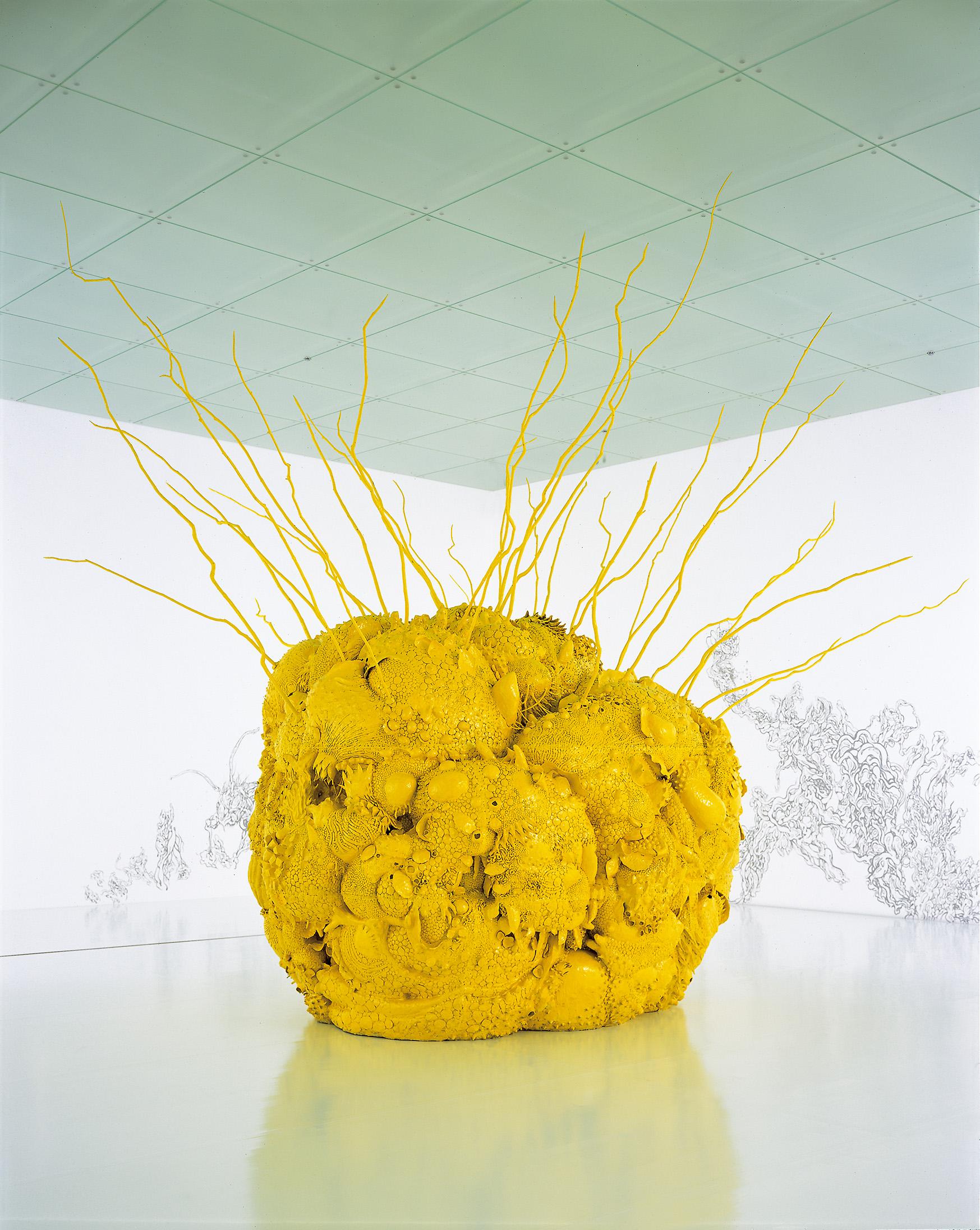
Tsubaki Noboru
Esthetic Pollution
1990
Polyurethane, clay, wood (willow), paints, etc.
290×360×270cm
Collection of 21st Century Museum of Contemporary Art, Kanazawa
©TSUBAKI Noboru. Photo by SAIKI Taku.
Courtesy of 21st Century Museum of Contemporary Art, Kanazawa.
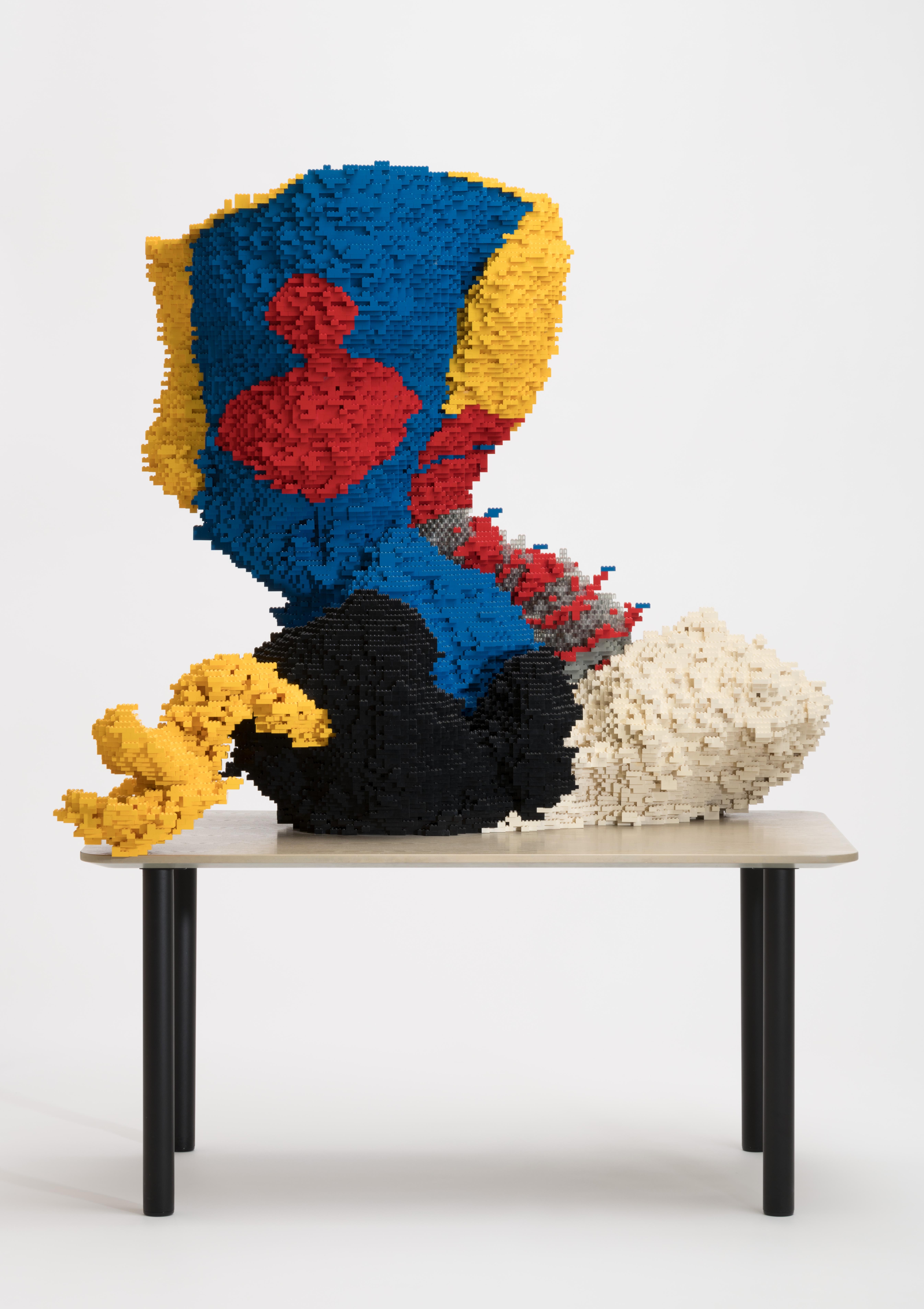
Nakahara Kodai
Lego
1990-91
Lego
135 × 156 × 105.5 cm
The National Museum of Art, Osaka
Photo: Nobutada Omote.
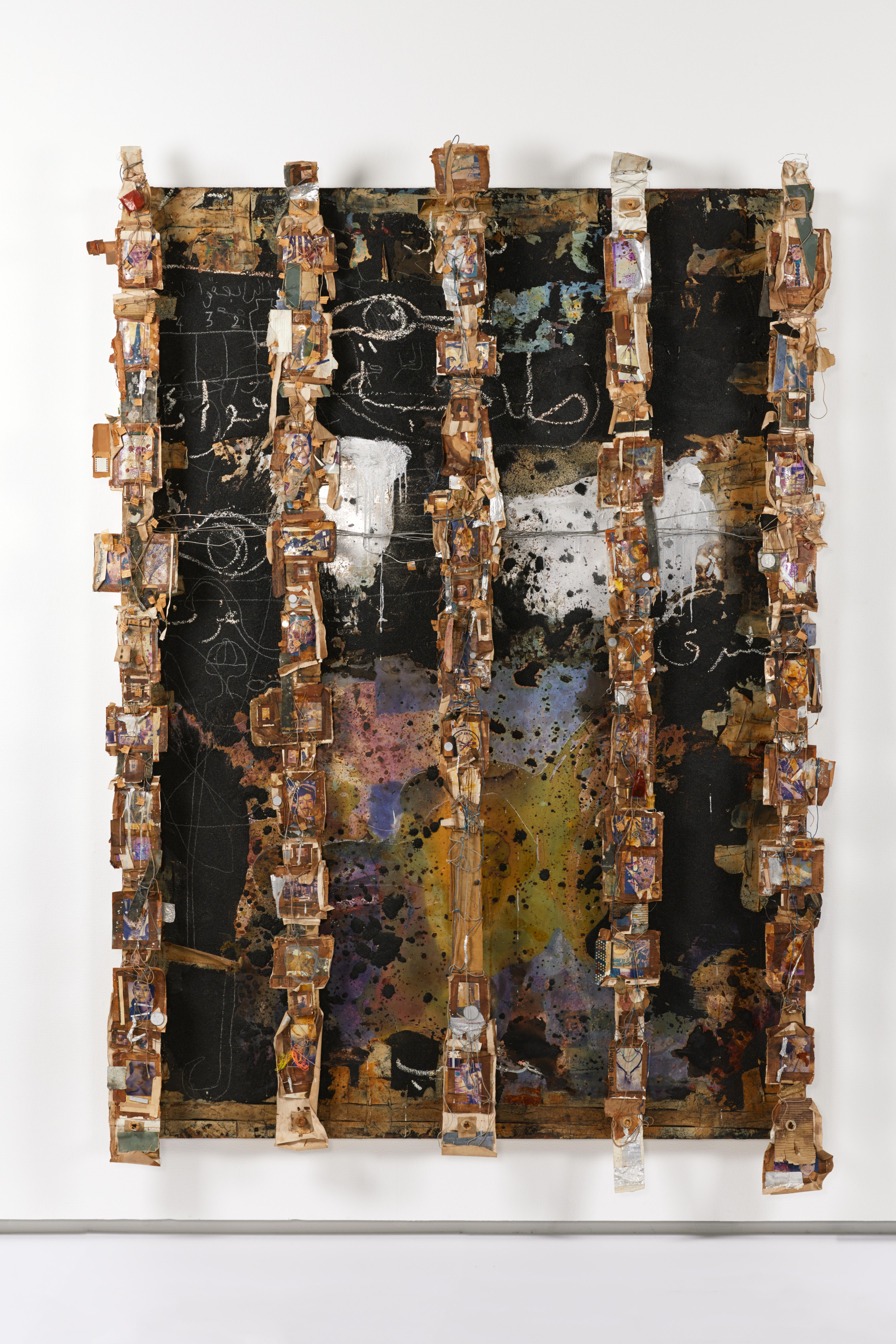
Ohtake Shinro
Retina (Wire Horizon, Tangier)
1990–93
Oil, oil stick, urethane paint, plastic resin,paper, staples, iron brass grommet, etc. on wooden panel
274 × 187 × 20 cm
The National Museum of Modern Art, Tokyo
© Shinro Ohtake. Photo: Ohtani Ichiro.
Curatorial Lens 1: The Past Is a Phantom
This section engages with history, exploring recurring subjects such as war, nuclear weapons, and colonialism. Artists are able to process, rethink and question histories, offering alternative readings to the conventional single narrative, and their works gain new meaning when viewed from a contemporary context that was inexorably shaped by these sweeping changes.

Yanobe Kenji
Atom Suit Project: Nursery School 1, Chernobyl
1997
Light box, color transparency
120 x 120 x 21 cm
Hiroshima City Museum of Contemporary Art
© Kenji Yanobe. Courtesy of Hiroshima City Museum of Contemporary Art.
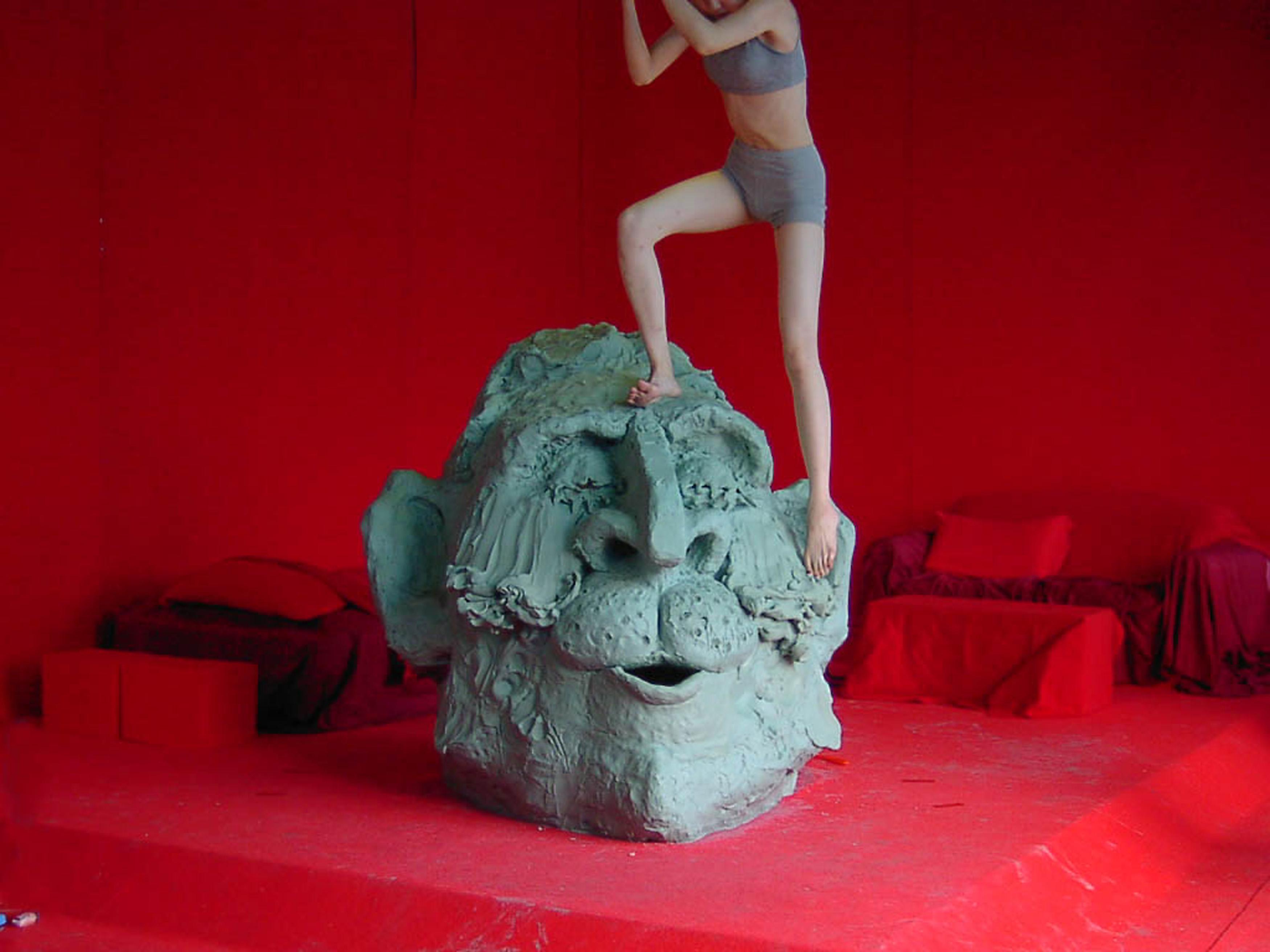
Takamine Tadasu
God Bless America
2002
Video installallation
8 min. 18 sec.
Collection of The National Museum of Modern Art, Tokyo
© Tadasu Takamine
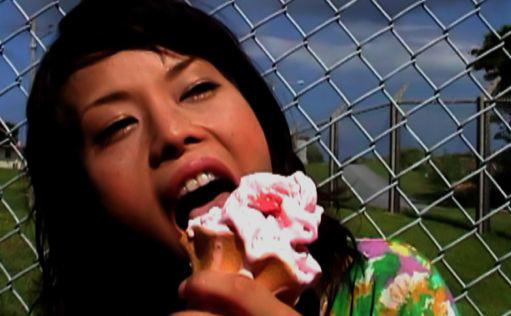
Yamashiro Chikako
I Like Okinawa Sweet from “OKINAWA TOURIST”
2004
Single-channel video
7min. 35sec.
Collection of the artist
© Chikako Yamashiro. Courtesy of Yumiko Chiba Associates.

Kazama Sachiko
A Steam Whistle, Mantetsu-man Manifest
2007
Woodcut print
(panel, Japanese paper, sumi ink)
182 × 120.5 cm
The National Museum of Art, Osaka
©Sachiko Kazama
Teruya Yuken
You-I, You-I
2002
Bingata dyed linen
169.2 × 149 cm
Mori Art Museum, Tokyo
©Yuken Teruya. Photo: Kioku Keizo.
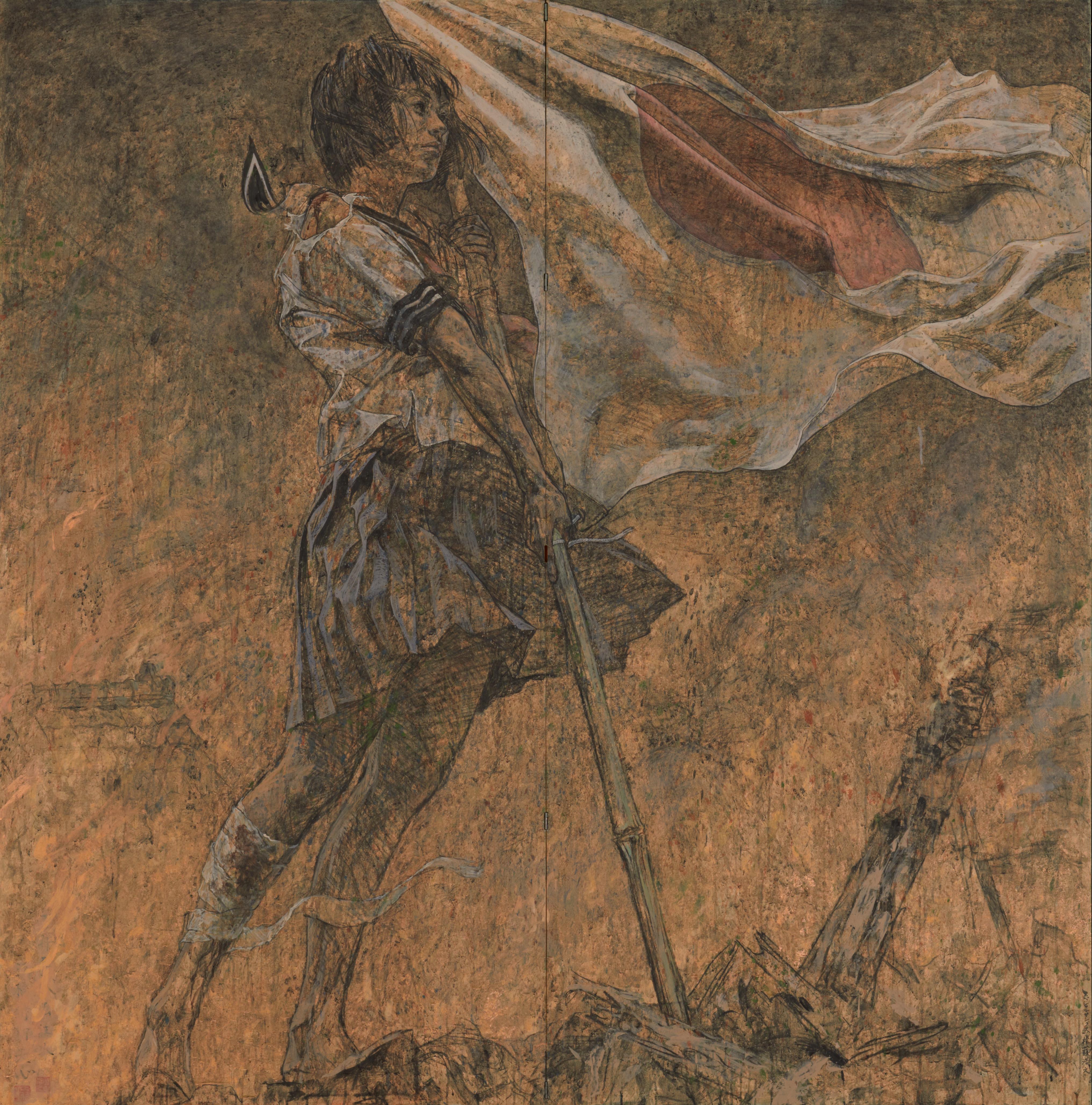
Aida Makoto
Beautiful Flag (War Picture Returns)
1995
Charcoal, self-made paint with Japanese glue, acrylic on paper (fusuma, sliding door), hinges, a pair of two-fold screens
169 × 169 cm each
The National Museum of Modern Art, Tokyo
©AIDA Makoto.
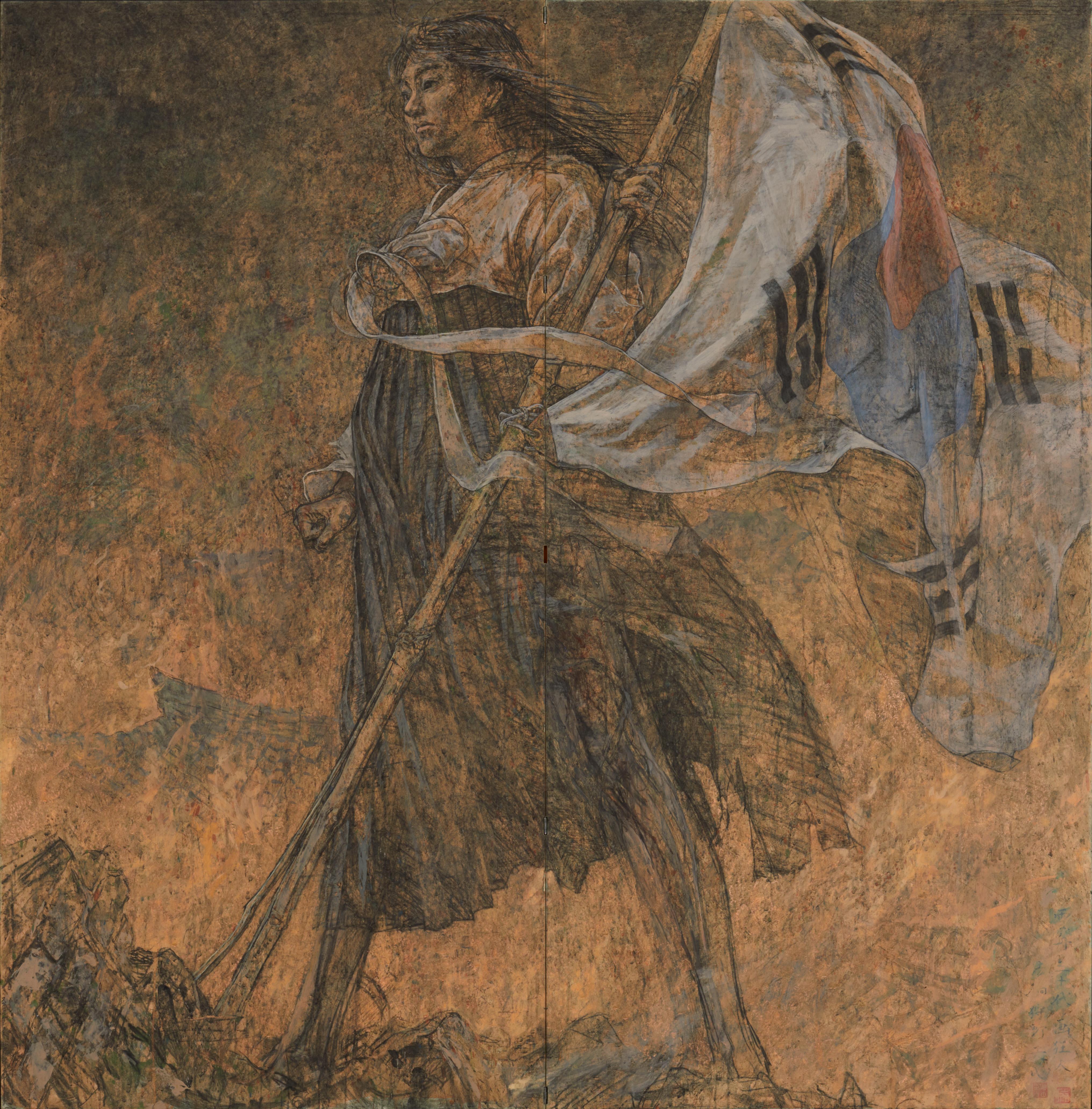
Curatorial Lens 2: Self and Others
The distinct and at times contradictory Japanese culture, both traditional and modern, is a fertile and inspiring subject for artists from Japan as well as overseas. This section presents works that explore themes ranging from gender and nationality to reinterpretation of Japanese culture. Through gazes exchanged between self and others, these works question identity from a wide variety of perspectives.
Screening schedule of the works of Dumb Type and Hito Steyerl
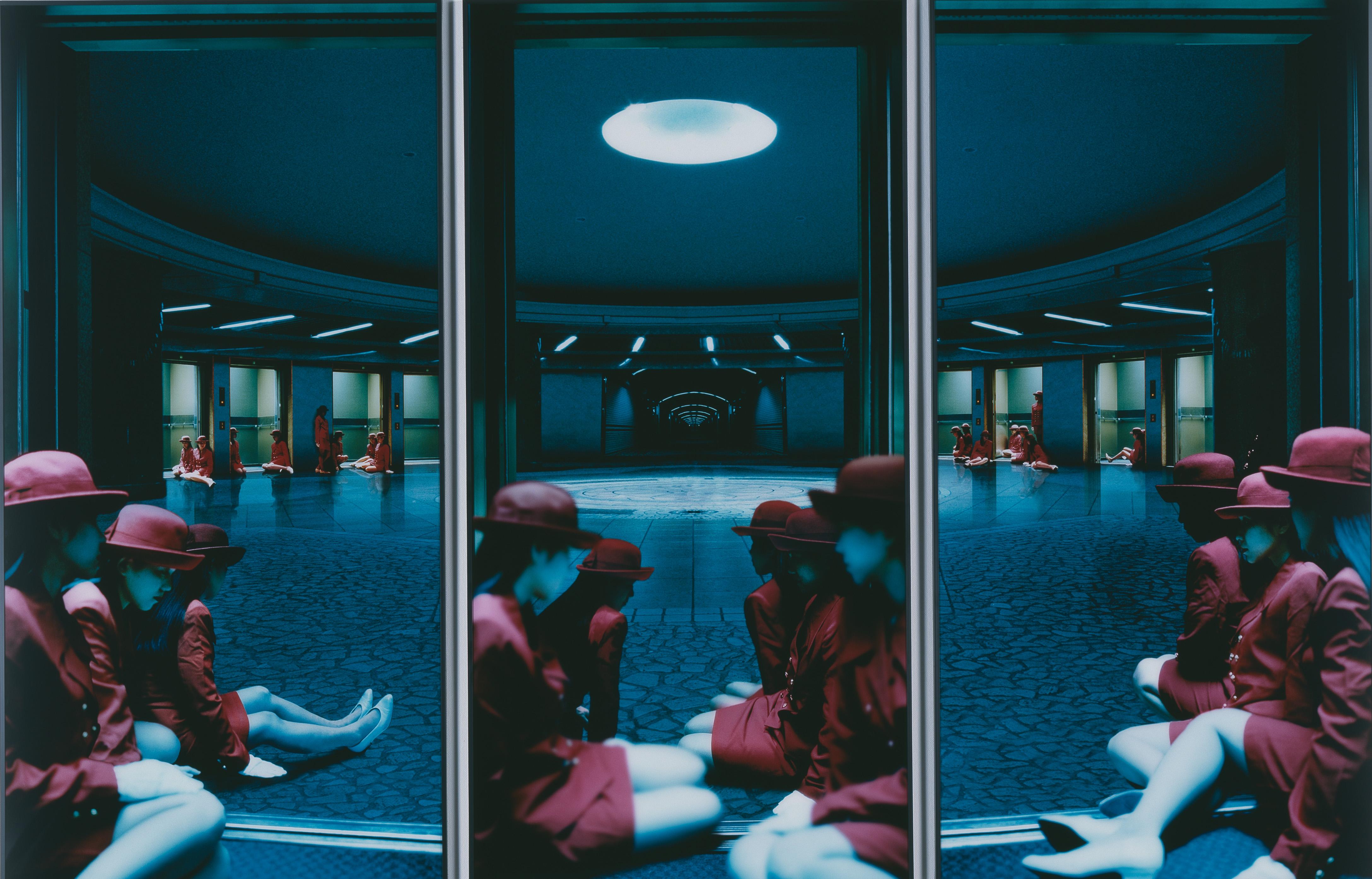
Yanagi Miwa
Aquajenne in Paradise II
1995
C-print 200.0 × 100.0 cm each (triptyque)
Collection of The National Museum of Art, Osaka
© Miwa Yanagi
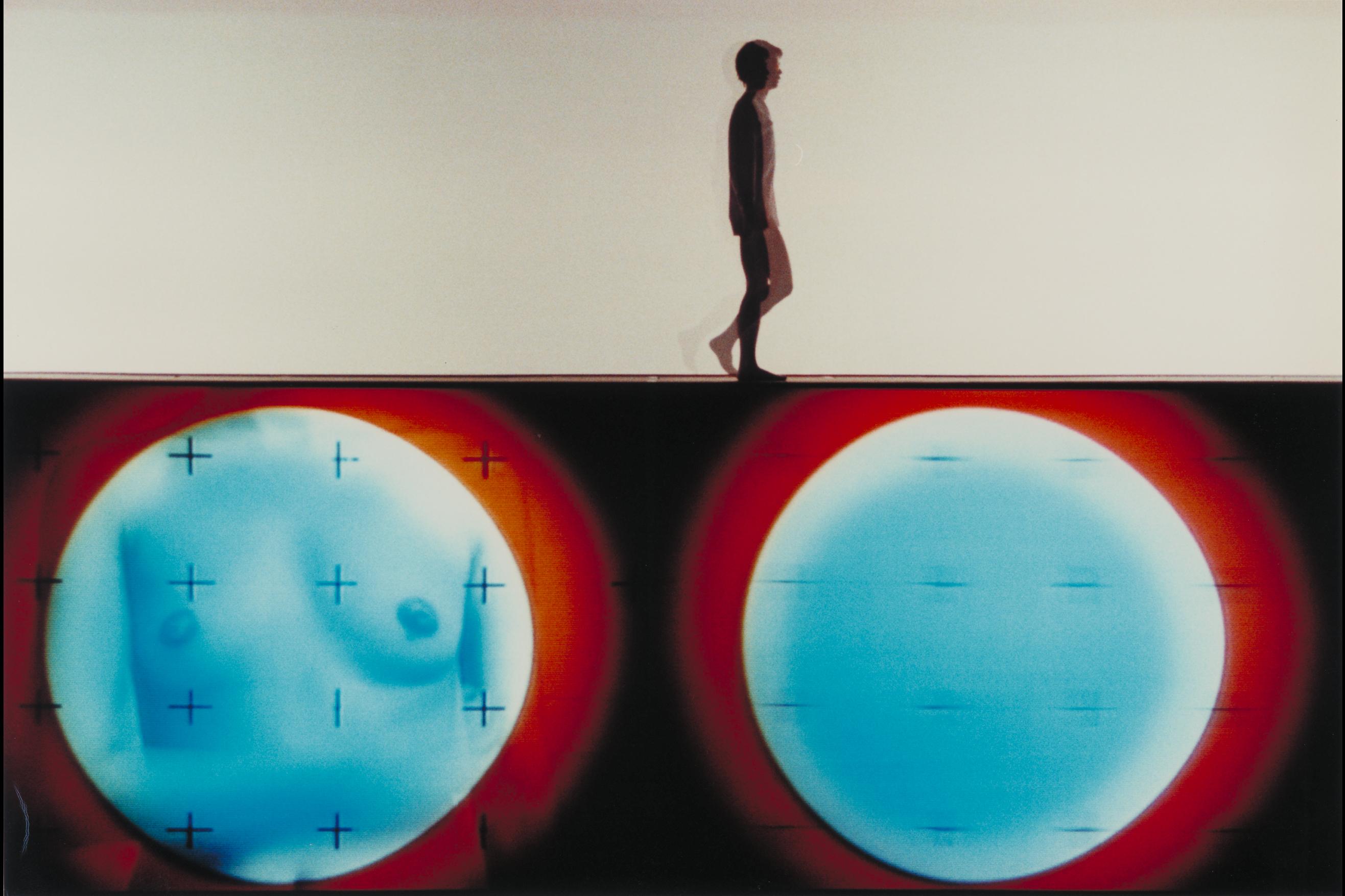
Dumb Type
Performance S/N
1995/2005
Video (color, stereo sound) 87 min.
Collection of the artist
Filming: WOWOW (1995, Spiral Hall, Tokyo)
Editing: Takatani Shiro
Photo: Yoko Takatani
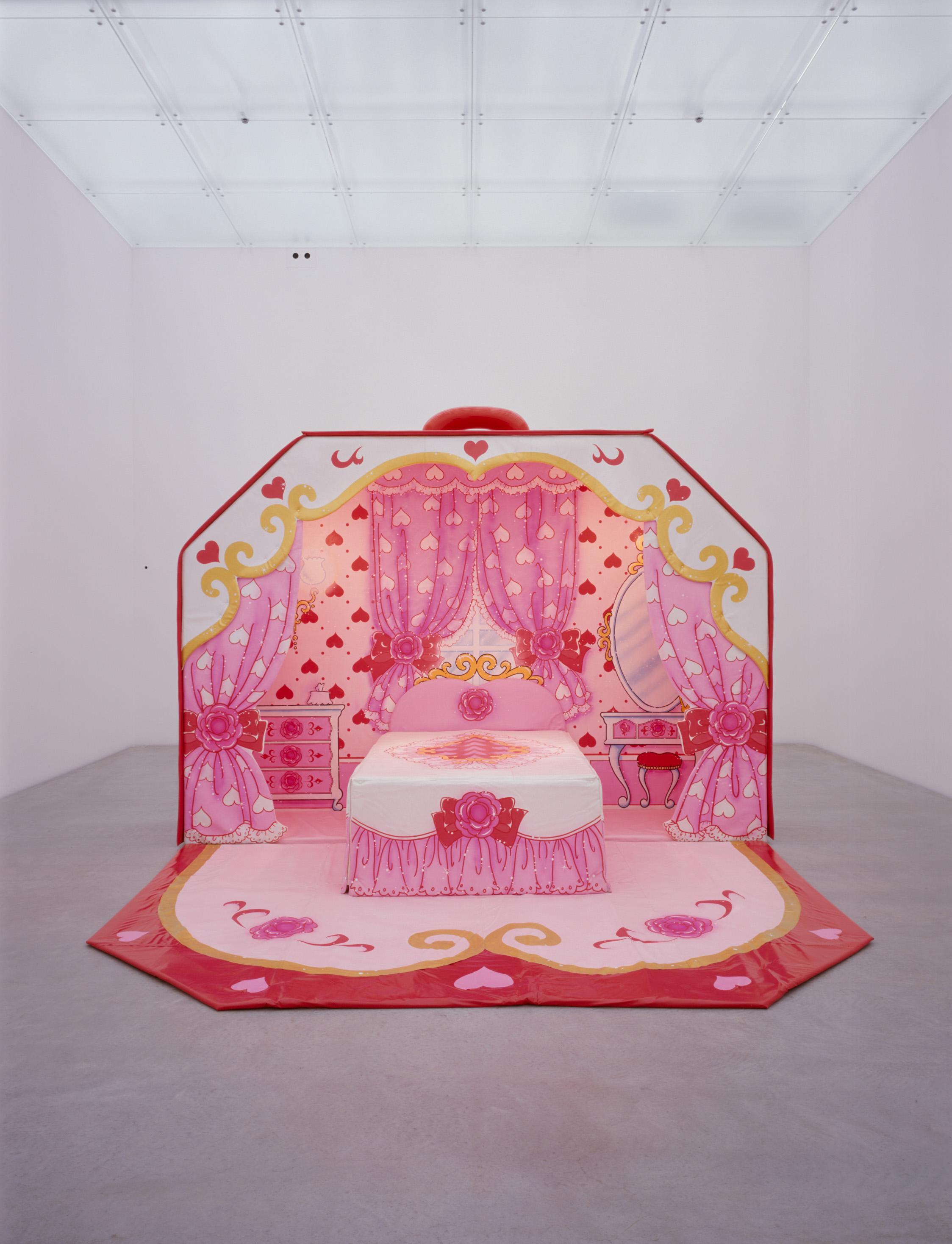
Nishiyama Minako
The PINKÚ House
1991/2006
Acrylic on plastic cloth, steel, urethane mat, etc.
310 x 400 x 370 cm
Collection of 21st Century Museum of Contemporary Art, Kanazawa
©NISHIYAMA Minako.
Photo: SUEMASA Mareo.
Courtesy: 21st Century Museum of Contemporary Art, Kanazawa.
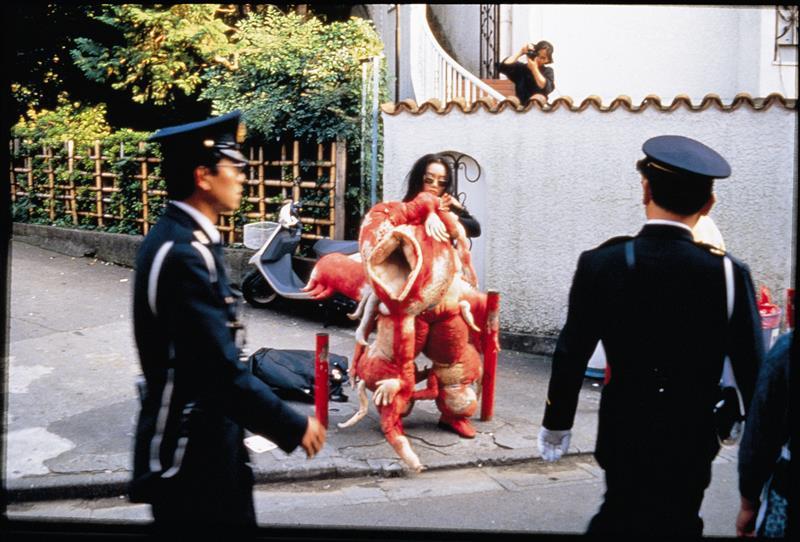
Lee Bul
Sorry for suffering - You think I'm a puppy on a picnic?
1990
Edited video of the performance photo - documentation
3 min. 50 sec.
Collection of the artist
© Lee Bul. Courtesy of the artist.

Rirkrit Tiravanija
(Ghost Reader C.H.)
2002
Video (color, sound)
8 h. 30min.
Van Abbemuseum with donation Stichting Promotors Van Abbemuseum
© Rirkrit Tiravanija 2002-2025. Courtesy of Air de Paris.

Tabaimo
public conVENience (Still image)
2006
Video installation 6 min. 05 sec.
Collection of the artist
© Tabaimo. Courtesy of Gallery Koyanagi.

Oscar Oiwa
Ancient Museum
1995
Acrylic on panel 182 × 546 cm
Toyota Municipal Museum of Art
©Oscar Oiwa Studio
Curatorial Lens 3: A Promise of Community
This section focuses on projects that engage with local communities and existing social structures to build new relationships. Through collaboration with regional communities, artists seek new possible forms of connecting, and explore how human relationships can be liberating and breaking down hierarchy.
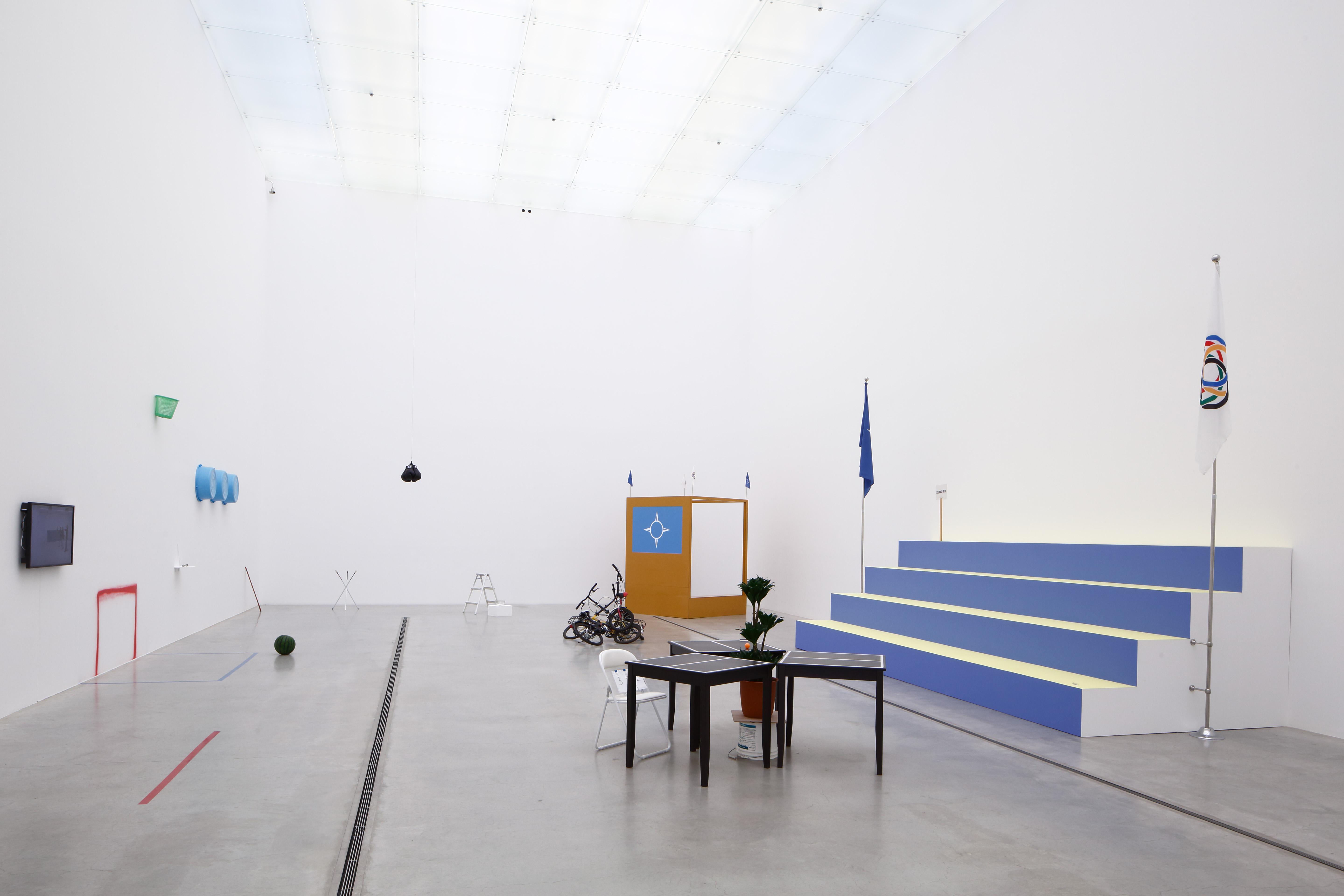
Xijing Men
Chapter 3 Welcome to Xijing - Xijing Olympics
2008
Video, mixed media
Dimensions variable
Video: 35 min
Collection of the 21st Century Museum of Contemporary Art, Kanazawa
© Xijing Men. photo: KIOKU Keizo.
Courtesy: 21st Century Museum of Contemporary Art, Kanazawa
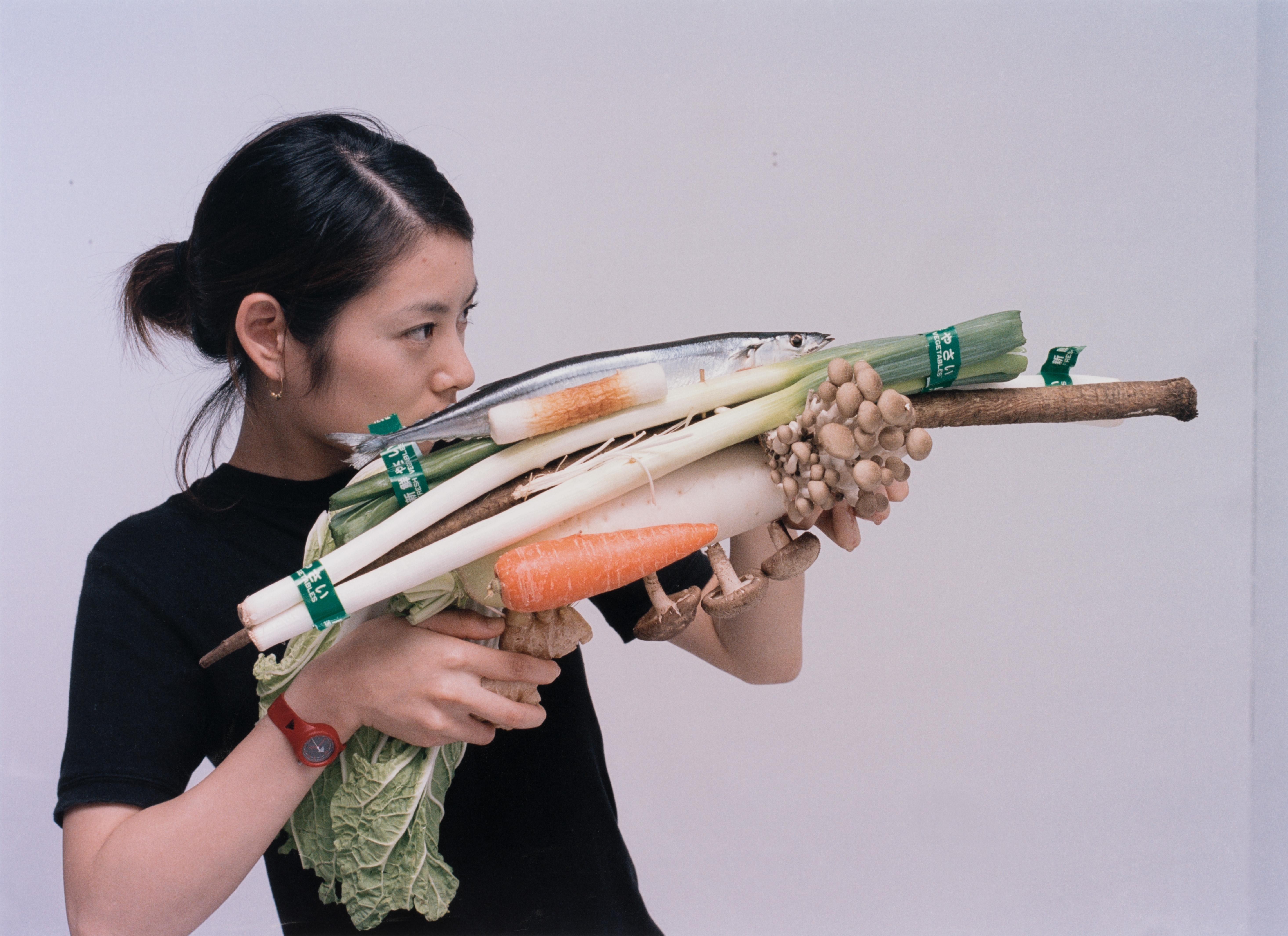
Ozawa Tsuyoshi
Vegetable Weapon: Saury fish ball hot pot / Tokyo
2001
C-print
113 x 156 cm
Collection of The National Museum of Art, Osaka
© Tsuyoshi Ozawa

Navin Rawanchaikul
Hakata Drive-in 1 (archival photo)
1998
Courtesy of Navin Production

Sone Yutaka
Her 19th Foot
1993
Metal, leather, rubber, etc.
90 × 40 × 100 cm each (19 pieces)
Art Tower Mito
Photo: Ken Kato
Shimabuku
Swansea Jack Memorial Dog Swimming Competition
2003
Video (color, sound)
6 min. 15 sec.
Collection of the artist
Collaboration with Glynn Vivian Art Gallery, Swansea, U.K
Courtesy: the artist + Air de Paris,
Romainville + Amanda Wilkinson Gallery, London
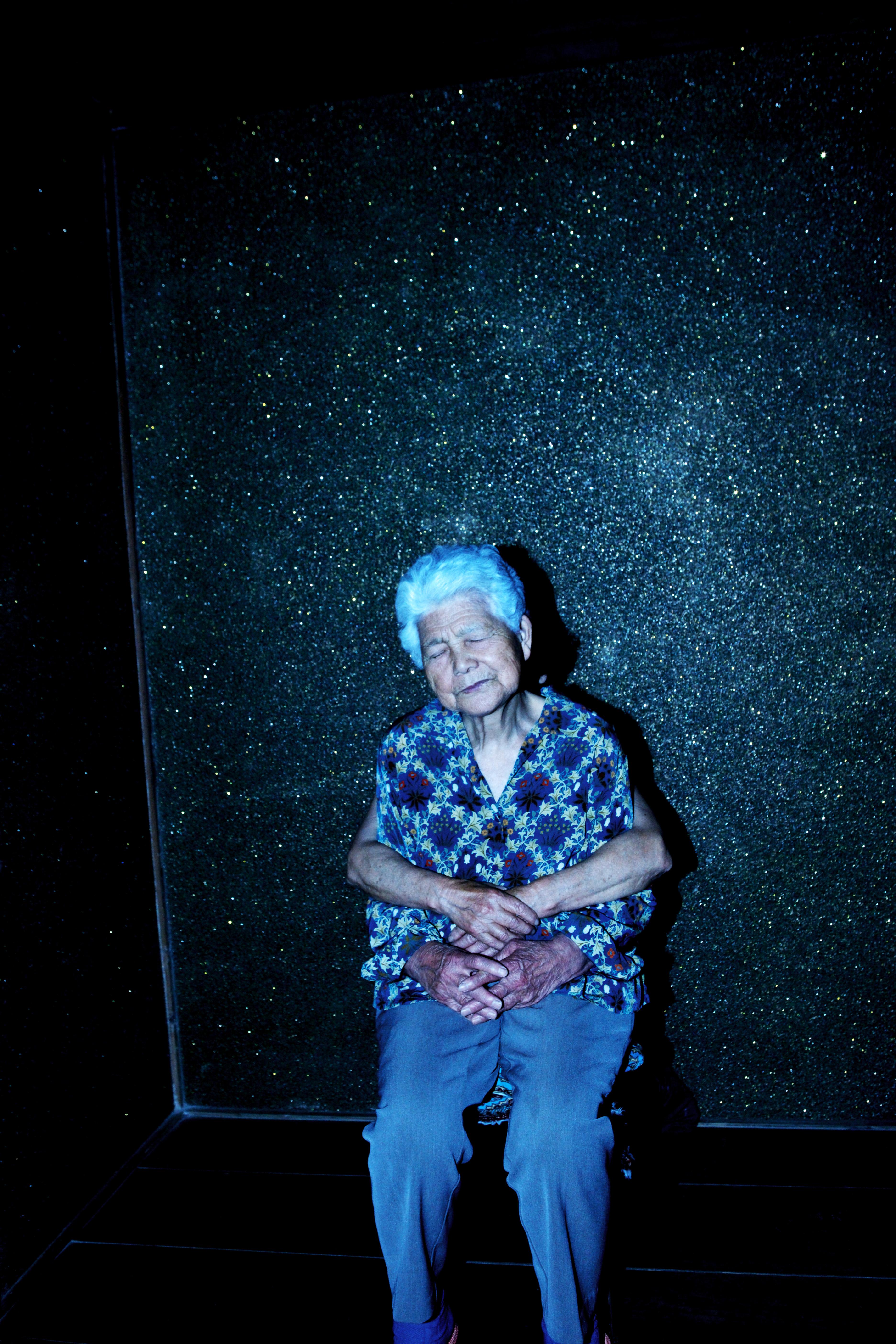
Shiga Lieko
mother's gentle hands from “RASEN KAIGAN”
2009
Chromogenic print
180 × 120 cm
Collection of 21st Century Museum of Contemporary Art, Kanazawa
© SHIGA Lieko. Courtesy of 21st Century Museum of Contemporary Art, Kanazawa.
Glossary
Anzaï Photo Archive
The photographer Shigeo Anzaï, a self-described ‘fellow traveler of contemporary art’, documented the Japanese art world for more than three decades beginning in 1970. This exhibition features Anzaï’s photographs of international artists visiting Japan in the 1980s and Japanese artists making their debut at international shows. These works vividly convey the art scene of the era.
Alternative Space
A type of art space that is neither museum nor commercial gallery. This new type of venue emerged in Europe and the United States in the 1960s and 1970s, and in Japan in the 1980s. The term is primarily used in relation to experimental exhibitions and activities. In addition to the Sagacho Exhibit Space (1983–2000), founded by Koike Kazuko, venues of this type in the Tokyo area include Spiral (1985–present), operated by the Wacoal apparel corporation, Heineken Village (1988–1991), run by the eponymous brewing company, and P3 (1989–present), originally located at Tocho-ji Temple in Yotsuya. Venues in other parts of Japan that focused on new artistic expressions include ICA Nagoya (1986–1992), KPO Kirin Art Plaza Osaka (1987–2008), and the Mitsubishi-Jisho Artium in Fukuoka (1989–2021).
Artist-in-residence
While a succession of art museums began opening in urban areas throughout Japan in the late 1980s, the 1990s saw an emergence of residency programs, in which local governments played a role in actively inviting artists to live and work in their communities. The ARCUS Project (1994–present), launched as an experiment in Moriya, Ibaraki, and the Akiyoshidai International Art Village in Yamaguchi (1998–present) are two long-running examples. In Kyoto, there are also programs facilitated by Villa Kujoyama (1992–present) and Goethe-Institut Villa Kamogawa (2011–present), established by the French and German governments as cultural outposts in Japan. Others, including Museum City Tenjin (1990), which held art projects in Fukuoka, and CCA Kitakyushu (1997–2021), organized programs in conjunction with exhibitions.
Artist Collectives
A term referring to a group formed by multiple artists. In many cases, the members may change, and each of them may pursue their own activities simultaneously. Groups that emerged in the 1950s, such as Jikken Kobo (Experimental Workshop), led by Takiguchi Shuzo, and the Gutai Art Association, founded by Yoshihara Jiro, are considered to be trailblazers in this field. Other collectives, including Dumb Type (1984–present), The Group 1965 (1994–present), and Xijing Men (2007–present), engage in genre-spanning transnational collaborations as they expand artistic horizons.
The Aperto Section of the Venice Biennale
The Venice Biennale, sometimes referred to as the Olympics of the art world, was established in 1895 and is held every two years in Venice. Countries from around the world have erected pavilions to showcase their leading artists, offering a window onto the latest trends in contemporary art. The biennial’s Aperto section, which was presented from 1980 to 1995, provided emerging artists with a gateway to success. The Japanese artists Miyajima Tatsuo and Morimura Yasumasa (both in 1988), as well as Tsubaki Noboru, Nakahara Kodai, and Yanagi Yukinori (1993), were among those who gained international recognition through their participation in the section.
International Exhibitions of Contemporary Japanese Art
Japanese contemporary art started to be presented internationally in the 1980s and 1990s, as the country grew more prominent in the global community as a result of its economic prosperity. Early examples include Against Nature: Japanese Art in the Eighties (1989–1991), which traveled to six cities in the US, and A Primal Spirit: Ten Contemporary Japanese Sculptors (1990–1991), which opened in Japan’s Hara Museum and traveled to four venues in North America. Other notable exhibitions include Zones of Love: Contemporary Art from Japan(1991–1992), presented first in Japan and later in Australia, and A Cabinet of Signs: Contemporary Art from Post-modern Japan (1991–1992), held in the UK and Sweden.
Subculture and Art
In the 1990s, Japanese artists born in the 1960s created innovative works based on subculture influences such as manga and anime. This trend, known as Neo-Pop, was associated with artists like Nakahara Kodai, Nara Yoshitomo, and Murakami Takashi, and it often included self-reflective critiques of consumer society and populism. Murakami, for example, forged the concept of Superflat by utilizing the exceeding flatness of traditional Japanese painting to depict pop culture, and, in doing so, he disrupted the status quo of high art.
Post-colonial theory
A theoretical approach that critically examines the socio-political and cultural impact of colonization in order to reinterpret history from a new perspective. This exhibition features works that reconsider the history of Japanese occupation in other Asian nations during the wartime imperialism from a contemporary viewpoint.
Feminism
While feminist art emerged in Europe and the US in the 1970s, it was not until the 1990s that the movement caught on in Japan. In particular, Japanese women artist captured attention, with exhibitions such as Gender—Beyond Memory: The Works of Contemporary Women Artists (1996, Tokyo Metropolitan Museum of Photography), De-Genderism(1997, Setagaya Art Museum), and Floating Images of Women in Art History: from the Birth of Feminism toward the Dissolution of the Gender (1997, Tochigi Prefectural Museum of Fine Arts). Gender biases continue to be challenged and reinterpreted to this day.
Museum Openings
A succession of museums opened in Japan in the late 1980s and early 1990s, buoyed by the bubble economy. These include the Hiroshima City Museum of Contemporary Art and the Yokohama Museum of Art (both in 1989); the Contemporary Art Center, Art Tower Mito, the Kawamura Memorial DIC Museum of Art, and the Watari Museum of Contemporary Art (all in 1990); the Marugame Genichiro-Inokuma Museum of Contemporary Art (1991); the Benesse House Museum and the Aichi Prefectural Museum of Art (both in 1992); the Museum of Contemporary Art Tokyo, the Tokyo Metropolitan Museum of Photography, and the Toyota Municipal Museum of Art (all in 1995).
Art Festivals
In the mid-1980s, local governments in Japan began to take the lead in organizing art festivals in cities and outdoor spaces as a way of revitalizing their communities. Notable examples include the Echigo-Tsumari Art Triennial (2000–present), the Yokohama Triennale (2001–present), and the Setouchi Triennale (2010–present). These events have led to a great deal of participatory and community-based collaborative art.
Meaning of the Title
The exhibition title Prism of the Real conveys the idea that artistic expression that emerged in Japan between 1989 and 2010 functioned like a prism that absorbs external light and refracts it into distinct wavelengths. The “real,” likewise, exists along a spectrum and cannot be defined in a singular way. Contemporary art not only served as a lens for interpreting and incorporating sociopolitical trends, but also acted as a medium that drew inspiration from Japanese cultural traditions and practices and helped disseminate them during a time of vibrant international exchange. Both Japanese artists and those who came to Japan from abroad observed the world and reality through their spectrum of interactions with the nation's culture and society, reflecting their observations in their penetrating analyses through art. With the concept of the “prism” as a guiding theme, this exhibition explores the diverse elements that shaped artistic expressions that unfolded in and beyond Japan.
Curators’ comments
“This collaboration with the National Art Center, Tokyo extends and deepens M+'s commitment to Japanese contemporary art and visual culture in the museum’s transnational collections and programming.
We are confident that Prism of the Real: Making Art in Japan 1989–2010 offers a refreshing look at a critical moment in Japanese culture and society in the first two decades of globalization, when contemporary art served as fertile ground for porous exchanges and dialogues. Eschewing a national framework, the exhibition hopes to remind viewers of a remarkable period of internationalism and encourage them to reflect on the possibility of dialogues with the wider world in the 21st century.”
Doryun Chong, Artistic Director and Chief Curator, M+
“In this ambitious curatorial collaboration, we reflect on a time when artists cast their gaze on everyday life while imbuing their work with sociopolitical messages.
Prism of the Real is being carried out through a constant dialogue between two museums rooted in Asian cities, M+ in Hong Kong and the National Art Center, Tokyo. We examine, from multiple perspectives, art that emerged amid the complexities of an era marked by dynamic shifts in society, politics, economy, and technology.”
Kamiya Yukie, Head, Curatorial Division, Chief Curator, The National Art Center, Tokyo
М+ and NACT
Co-curated by The National Art Center, Tokyo and M+, Hong Kong, Prism of the Real: Making Art in Japan 1989–2010 presents a multifaceted view of art in which multiple histories and contexts coexist, while examining Japan as a platform for artistic creation from both national and international perspectives.
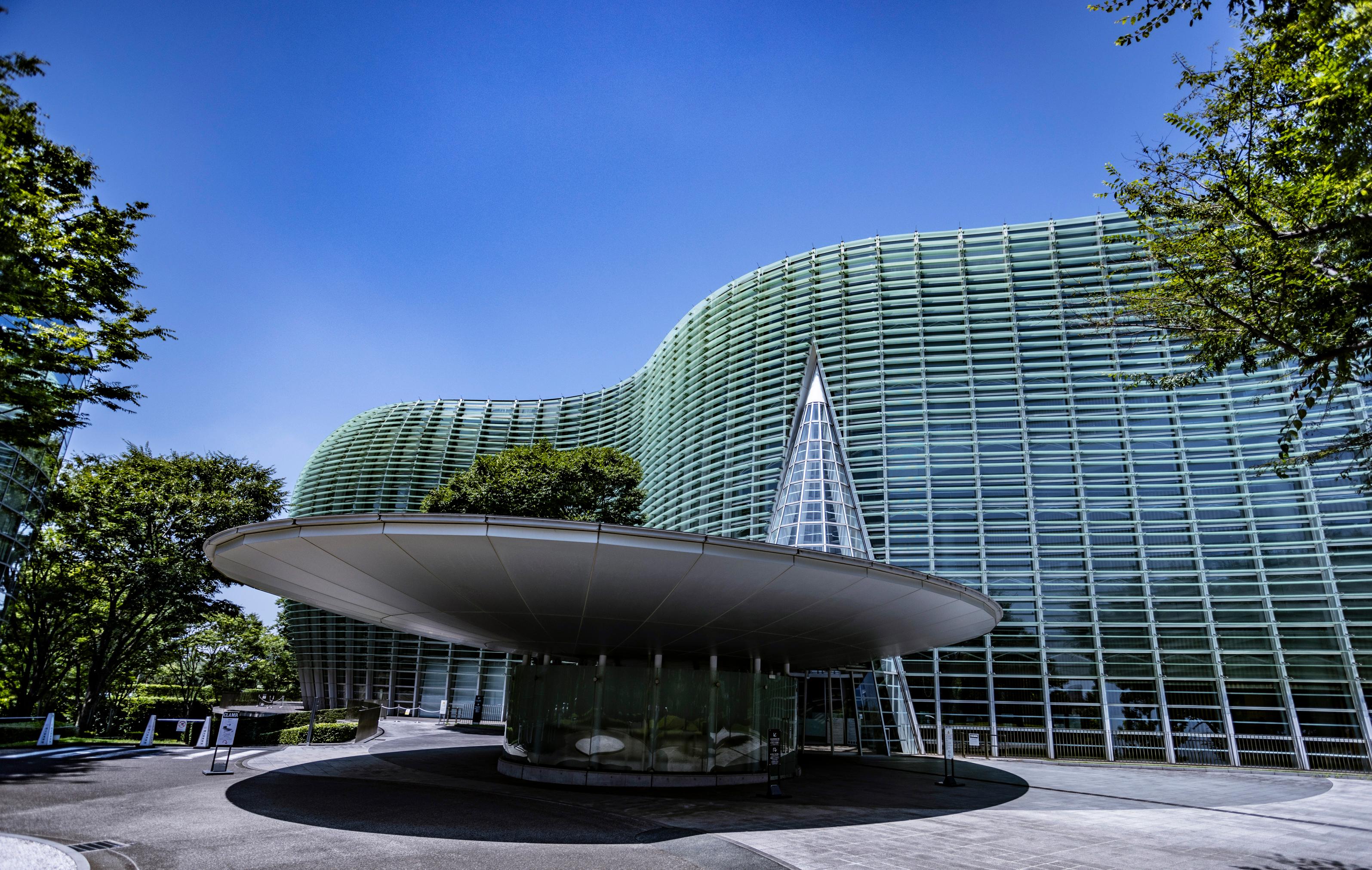
© The National Art Center, Tokyo
About NACT
The National Art Center, Tokyo (NACT) is the fifth institution to be established as part of the Independent Administrative Institution National Museum of Art, with the mission to make a contribution to culture through art in order to achieve coexistence and mutual understanding among diverse cultures. In addition to hosting a broad spectrum of exhibitions in one of the largest gallery spaces in Japan, we collect, present, and provide access to art-related information and resources, initiate educational programs, and facilitate cross-cultural exchanges.
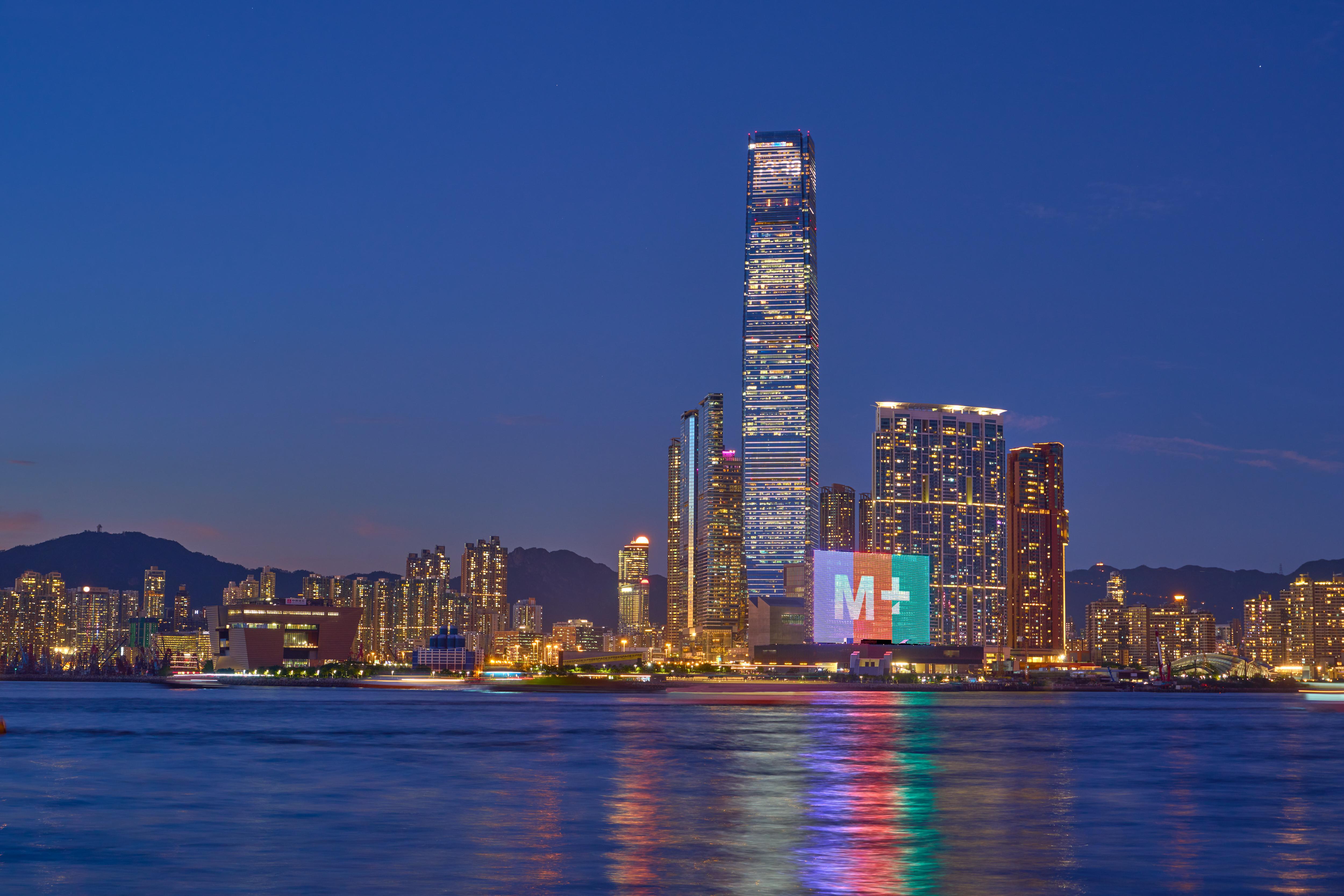
M+, Hong Kong
Photo: Kitmin Lee
Courtesy of M+, Hong Kong
About M+
M+ is Asia’s global museum of contemporary visual culture. Located in Hong Kong’s West Kowloon Cultural District (WestK), it is dedicated to collecting, exhibiting, and interpreting visual art, design and architecture, moving image, and Hong Kong visual culture of the twentieth and twenty-first centuries. The landmark M+ building on Hong Kong’s Victoria Harbourfront was designed by the world-renowned architectural firm Herzog & de Meuron in partnership with TFP Farrells and Arup. It spans a total floor area of 65,000 square metres, featuring thirty-three galleries alongside a Learning Hub, Moving Image Centre, Research Centre, and Roof Garden, among other event and programming spaces. The M+ Facade is one of the largest LED screens in the world, showcasing commissioned artworks on the Hong Kong skyline every evening. The museum stewards a multidisciplinary permanent collection that includes objects from regions across Asia and beyond. A highlight is the M+ Sigg Collection, one of the world’s most extensive collections of Chinese contemporary art. Today, M+ is a nexus for researching and presenting contemporary visual culture, inspiring thought and curiosity.
About the West Kowloon Cultural District (WestK)
WestK is one of the largest and most ambitious cultural hubs in the world and Hong Kong’s new cultural tourism landmark, spanning forty hectares alongside Victoria Harbour. WestK comprises a mix of landmark arts and cultural facilities, including world-class museums M+ and the Hong Kong Palace Museum, intricately designed performing arts venues the Xiqu Centre and Freespace, the eleven-hectare Art Park with a waterfront promenade, and the upcoming WestK Performing Arts Centre. Hosting over 1,000 exhibitions, performances, programmes, and events each year, WestK provides a vital platform for both emerging and established artists. WestK welcomes more than ten million visitors each year, evolving as the international cultural brand of Hong Kong and strengthening the city’s strategic role as an East-meets-West centre for international cultural exchange.
Catalog and List of Works
|
Size: A5 variation |
List of Works
Guidebook
Prism of the Real: Making Art in Japan 1989–2010 Guidebook
Staff List
Curatorial Team
Curatorial Director: Doryun Chong, Artistic Director and Chief Curator, M+
Coordinating Curator: Kamiya Yukie, Head, Curatorial Division, Chief Curator, The National Art Center, Tokyo
Curators: Isabella Tam, Curator, Visual Art, M+; Jihye Yun, Curator, The National Art Center, Tokyo
Curatorial Assistants: Annessa Chan, Curatorial Assistant, M+; Izawa Takuto, Assistant Curator, The National Art Center, Tokyo
Exhibition Advisors Osaka Eriko, Director General, The National Art Center, Tokyo; Hayashi Sumi, Independent Curator
Exhibition Design
Hino Naohiko
Art Direction
Oooka Hironori (HIRONORI OOOKA OFFICE)
Miyamura Yasuwo
Credit
Organized by
The National Art Center, Tokyo, in partnership with M+, Hong Kong; Japan Arts Council; Agency for Cultural Affairs, Government of Japan 
Co-presented by
Nikkei Inc.
Grant from
Mondriaan Fund 
movie
Walk-through
Artist's Interview|Introduction: A Critical Turn
Artist's Interview|Curatorial Lens 1: The Past Is a Phantom
Artist's Interview|Curatorial Lens 2: Self and Others
Artist's Interview|Curatorial Lens 3: A Promise of Community
Related books
A list of materials from the NACT's collection related to the exhibition is available on the OPAC.
Please click here to see the list on Current Exhibition-related Materials Exhibit page.
These materials are also available in the Art Library on the 3rd floor.
Please click here to see the Art Library's general information.
Related events
-
- Exhibition Related
Artists Talk
September 13 (Sat), 2025
-

- Exhibition Related
Special Screening: Matthew Barney DRAWING RESTRAINT 9
October 25 (Sat), 2025
-
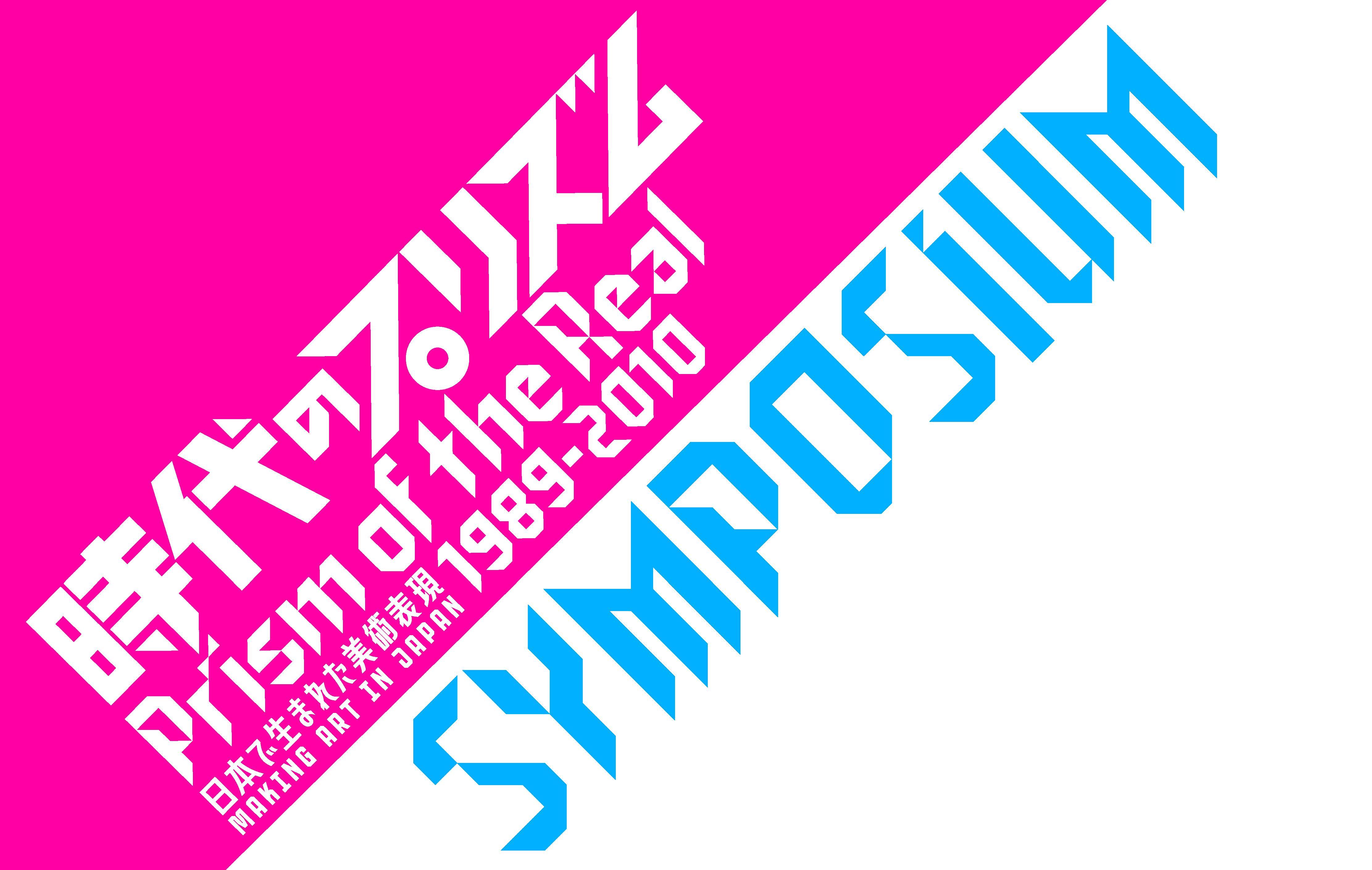
- Exhibition Related
Symposium: "Prism of the Real, 1989-2010: Tracing Its Spectrum in Curatorial Practices and Art Criticism Today"
November 7 (Fri), 2025

